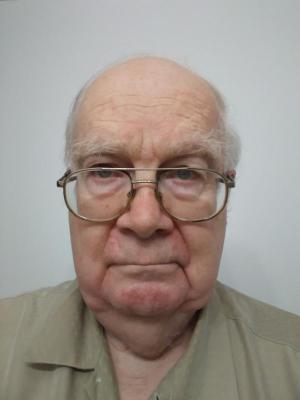Geary Foertsch’s Oct. 20 letter – “COVID-19 fearmongering is reprehensible” – does a disservice to the public by trivializing and minimizing the danger from this virus. The short but real overview is that while some infected people show no symptoms or mild symptoms and recover quickly and completely, up to very roughly one-third of the people show symptoms serious enough to require hospitalization. About one-third of those go into intensive care. And up to one-third of those who go into the ICU do not come out alive. Out of those who are hospitalized, up to two-thirds who are discharged will still have some serious symptoms for many months and up to one-third will have long-term serious symptoms bad enough to prevent them from returning to work and from having anything like a normal life.
The example numbers I gave above are realistic but still “eyeball” estimates and will vary considerably with other factors. Out of about a thousand digital copies of lay media articles I now have, about 50 are devoted to just the long-term cases in small populations and more of these have only come out in the last month. I have a few journal articles mentioning persistent and devastating symptoms as well as cases of bizarre tissue damage and in unexpected organs.
Returning to Foertsch’s letter, the first half was basically a story with COVID-19-denier, anti-Carney, anti-government, and anti-Forney themes and rants. I shall not counter-rant. The second half of his letter contains the objective and misleading mistakes that I will discuss below.
First, Foertsch cited a death rate of “.06 percent.” I have noticed since the virus hit this country that there are two narratives out there about COVID-19 death rates. One is from medical science and is roughly 2-3 percent, and the practitioners are aware of the unanswered questions. The other narative is from media with conservative political bias or business interest bias. By spinning and massaging the words, sentences, arguments and assumptions, and creating doubts and stretching uncertainties, one can get a tiny death rate such as the one Foertsch gave us.
Second, and in specific, Foertsch derived his implied “.06 percent” low death rate from COVID-19 by dividing the 646 COVID-19 deaths by Delaware’s total population of 974,051 people. This is a cheat because you should divide the total number of deaths when it is known that that death had a positive test for COVID-19 by the total number of people that tested positive for COVID-19. This works out to 646/21,466 = 3 percent, using Foertsch’s own numbers in his own letter. That is more consistent with most credible other sources. It is not a final number, but it’s definitely not trivial, either.
Third, Foertsch came up with a vague and incoherent rationalization to conclude that only 9,000 people were killed by the virus and not the 200,000+ figure that everyone else in the USA uses for COVID-19 deaths in the USA.
Foertsch’s rationalization also somehow implies that the deaths are caused by other diseases and not COVID-19. I have seen many articles which estimate the death rate differently.
This estimate is based on comparing death data from this year when COVID-19 was new with death data from a similar period last year when COVID-19 was not here. The numbers really are much larger this year when the virus was here.
Furthermore, COVID-19 is continuing to explode all over the world except in a few places including China. You don’t have to believe China’s COVID-19 numbers, but from all the business media I see, there is no significant number of COVID-19 cases there. They also see a Chinese economy expanding, now, at almost 5 percent while our economy is lower, now, than the beginning of the year. Also, unemployment here is serious.
Fourth, the death rate is probably not going to change much in the future. But the total number of deaths will continue to grow!
Foertsch does not seem to realize this! Some estimates are saying that another 200,000 might die before the end of this year and many hundreds of thousands more will die next year. Foertsch is misleading people by trying to get us to look at a small number that won’t change much but not talk about the big number that will continue to grow quite a bit.
Fifth, besides the possibility of dying from COVID-19, there is this other problem of high significance: the people with the incomplete recoveries.
They are called “Long haulers” or patients with “Long COVID-19.” Some numbers are now known from one recent study out of King’s College, London. Of all cases, 5 percent will suffer for eight weeks and 2 percent will take at least 12 weeks or longer.
One report I have is from a person still seriously ill after six months. Some people in that last category will have symptoms that will prevent them from ever holding a job again and some are in therapy for PTSD. From current case numbers, there must be another some 200,000 people in this very sad state, and the significance of their plight has just recently started to get the media attention it deserves. One article by another author also gives the same number for people in this sad state that I give, here.
This number will also grow with time in proportion to the growth in case numbers and deaths.
Estimates indicate that some 90 percent of the world’s population has yet to be exposed to this highly infectious virus. Global data continue to come out showing expansions in cases and deaths. Europe is now talking about a major lockdown. Thus, ultimately, through next year there could be up to 10 times as many deaths as now, and up to 10 times as many “Long haulers” with residual, maybe permanent and serious symptoms.
Foertsch evidently is unable to grasp the numbers behind the loss of life, the loss of income, the large drain on medical resources, and all the secondary woes from COVID-19. It is people who ignore or diminish or underestimate this danger who are reprehensible.






















































